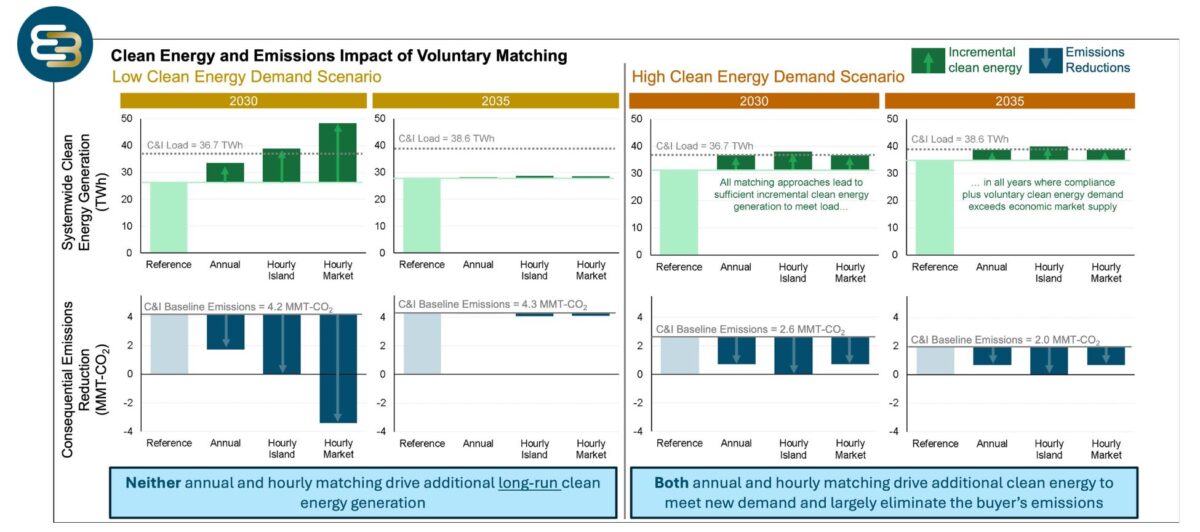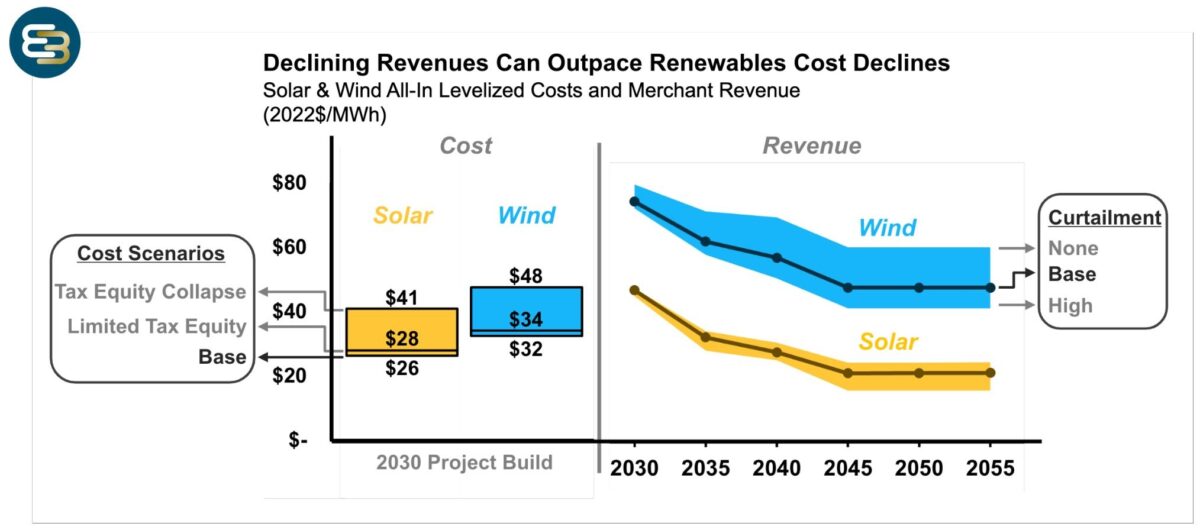
The growing threat of climate change has in recent years prompted a surge in organizations across the United States setting voluntary carbon reduction goals. Meeting these goals requires huge investments in clean energy, in particular to cover “Scope 2” emissions from electricity generation. The conventional method for verifying and documenting the clean energy content of a specified electricity purchase has been to acquire and retire the Renewable Energy Certificates (“RECs”) associated with the specified generation.
However, the impact of clean electricity generation on carbon emissions varies by time and location based on the carbon intensity of the generating resources that are displaced. There is also a question of whether clean energy purchases come from resources that are “additional,” i.e., that wouldn’t otherwise exist. To address these issues and ensure they are maximizing their impact, some organizations have begun reevaluating how they measure the carbon content of their clean energy purchases. In a new study, sponsored by Meta, E3 examines the impact of different clean energy accounting frameworks on “consequential” (i.e., systemwide) emissions.
Download the full report here.
The study uses E3’s California RESOLVE capacity expansion model to dynamically evaluate the impacts of different carbon accounting approaches. The primary scenarios include a Reference case, an Annual Matching case in which clean energy demand can be met with new clean generation at any time during the year, and two Hourly Matching cases that require hourly alignment of clean energy demand and generation. By using a dynamic evaluation approach, E3’s analysis incorporates both the direct impact of specific clean energy purchases and the response to those investments over time by the electricity market. The study thereby focuses on the “additionality” of clean energy investments, only counting clean energy attributes of resources that would not have been built anyway.

Using this approach, the study examined the impact of hourly and annual matching requirements, and also considered the real-world project economics for renewables. Combining real-world renewable project economics with capacity expansion modeling for voluntary corporate procurements, and evaluating the current project economics landscape, E3 identified the following key findings:
- In future scenarios where there is strong demand for clean energy attributes (more than the market would supply on its own), both annual and hourly matching drive additional clean energy generation sufficient to meet new clean energy demand and largely eliminate the buyer’s carbon emissions.
- Lower renewable costs can create futures where the supply of clean energy attributes exceeds demand for them. In this scenario, neither annual nor hourly emissions accounting leads to significant incremental long-term increases in clean energy generation.
- Hourly matching requires clean energy purchasers to procure significantly more clean energy to ensure enough clean energy to meet demand during the worst hours of the year. This exposes the buyer to substantial market risk for selling excess procurement in the energy market.
- Long-term power purchase agreements are likely to continue to be needed to finance capital-intensive clean energy projects, even under very optimistic clean energy cost projections, highlighting the critical role of voluntary buyers in providing credit-worthy off-take agreements.
- Voluntary demand for clean energy is highly price-sensitive, meaning that increases in the cost and risk of clean energy procurement stemming from mandatory use of stringent accounting frameworks, such as hourly matching, is likely to lead to a significant contraction of the voluntary market, potentially raising systemwide emissions due to lower investment in clean energy.

E3 thanks Meta for its partial support for this analysis. All report conclusions and findings are our own. E3’s Arne Olson, Kushal Patel, Liz Mettetal, Gregory Gangelhoff, Angineh Zohrabian, Hugh Somerset, Ruoshui Li, and Joshua Spooner contributed to the report.


